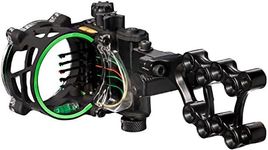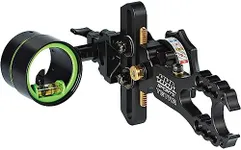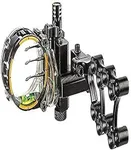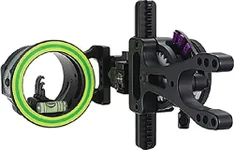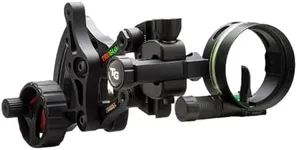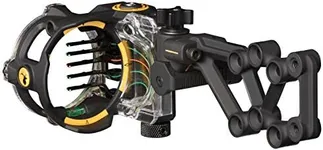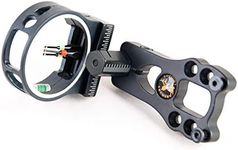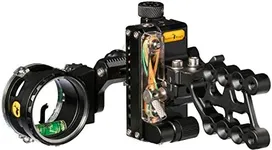Buying Guide for the Best Archery Bow Sights
Choosing the right archery bow sight can significantly improve your accuracy and overall shooting experience. A bow sight helps you aim more precisely by providing a reference point to line up your shot. When selecting a bow sight, it's important to consider various specifications to ensure it meets your needs and enhances your performance. Here are some key specs to consider and how to navigate them.Pin ConfigurationPin configuration refers to the number and arrangement of pins on the sight. Pins are the reference points you use to aim at different distances. Single-pin sights are simpler and less cluttered, making them ideal for beginners or those who prefer a clear sight picture. Multi-pin sights, on the other hand, allow for quick adjustments to different distances without having to move the sight, which can be beneficial for more experienced archers or those who shoot at varying ranges. Choose a pin configuration based on your shooting style and the distances you typically shoot.
AdjustabilityAdjustability refers to how easily you can make changes to the sight's settings, such as windage (left-right) and elevation (up-down). More adjustable sights allow for finer tuning and can accommodate different shooting conditions. Fixed sights are simpler and more durable but offer less flexibility. If you often shoot in varying conditions or at different distances, a sight with more adjustability might be beneficial. For those who prefer simplicity and consistency, a fixed sight could be a better choice.
Material and DurabilityThe material of the bow sight affects its weight, durability, and overall performance. Common materials include aluminum, plastic, and carbon. Aluminum sights are durable and lightweight, making them a popular choice. Plastic sights are generally more affordable but may not be as durable. Carbon sights are lightweight and strong but can be more expensive. Consider the conditions in which you'll be using the sight and how much wear and tear it will endure. If you need a sight that can withstand rough use, opt for a more durable material.
Sight LightA sight light is an accessory that illuminates the pins, making them easier to see in low-light conditions. This can be particularly useful for hunting during dawn or dusk or in shaded areas. Some sights come with built-in lights, while others require an additional purchase. If you frequently shoot in low-light conditions, a sight with a light or the option to add one can be very beneficial. For those who primarily shoot in well-lit environments, this feature may not be as critical.
Mounting StyleThe mounting style refers to how the sight attaches to your bow. There are two main types: dovetail and fixed. Dovetail mounts allow for easy removal and reattachment of the sight, which can be useful for transport and storage. Fixed mounts are more secure and less likely to shift, providing consistent performance. Consider how often you need to remove your sight and whether you prioritize ease of use or stability. If you travel frequently with your bow, a dovetail mount might be more convenient. For consistent shooting performance, a fixed mount could be better.
Lens OptionsSome bow sights offer the option to add a lens, which can magnify the target and improve accuracy. Lenses come in different magnification levels, typically ranging from 2x to 6x. Higher magnification can help with precision at longer distances but may also make the sight picture shakier. If you shoot at long distances or need extra help with target clarity, a sight with lens options might be beneficial. For those who shoot at shorter ranges or prefer a simpler setup, a sight without a lens could be sufficient.


